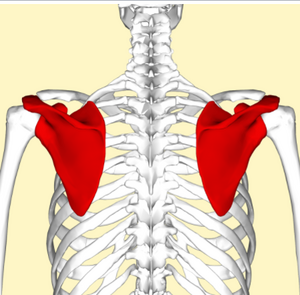Blackburn Exercises: Difference between revisions
No edit summary |
No edit summary |
||
| Line 1: | Line 1: | ||
<div class="noeditbox"> | <div class="noeditbox"> | ||
This article or area is currently under construction and may only be partially complete. Please come back soon to see the finished work! ({{REVISIONDAY}}/{{REVISIONMONTH}}/{{REVISIONYEAR}}) <div class="editorbox"> | This article or area is currently under construction and may only be partially complete. Please come back soon to see the finished work! ({{REVISIONDAY}}/{{REVISIONMONTH}}/{{REVISIONYEAR}}) | ||
<div class="editorbox"> | |||
'''Original Editor '''- [https://www.physio-pedia.com/User:Shreya_Pavaskar Shreya Pavaskar] | '''Original Editor '''- [https://www.physio-pedia.com/User:Shreya_Pavaskar Shreya Pavaskar] | ||
| Line 6: | Line 8: | ||
</div> | </div> | ||
==Description== | ==Description== | ||
Blackburn et. al designed an exercise protocol for Scapular dyskinesia. It has been used widely ever since. | Blackburn et. al designed an exercise protocol for Scapular dyskinesia. They are designed to strengthen Scapular stabilizers and RC cuff.<ref>Higgins M. Therapeutic exercise: From theory to practice. FA Davis; 2011 Apr 19.</ref> It has been used widely ever since. | ||
# Prone Extension "I" - Prone with palm facing upwards, arms extended and lift parallel to the thorax while keeping your shoulders retracted. | |||
# Prone Extension "Y" - Prone with palm facing upwards, shoulder abducted to 110° to the thorax while keeping your shoulders retracted. (most effective for infraspinatus)<ref>Otis JC, Jiang CC, Wickiewicz TL, Peterson MG, | |||
W<span class="_ _1"></span>arren RF<span class="_ _2"></span>, Santner TJ. Changes in the moment | |||
arms of the rotator cuff and deltoid muscles with | |||
abduction and rotation. J Bone Joint Surg Am. 76: | |||
# Prone Extension - Prone with | 667-676,1994.</ref> | ||
# Prone Extension "T" - Prone with the elbow extended and the shoulder abducted to 90° and externally rotated (most effective for supraspinatus)<ref>Malanga GA, Jenp YN, Growney ES, An KN. EMG analysis of shoulder positioning in testing and strengthening the supraspinatus. Medicine and science in sports and exercise. 1996 Jun 1;28(6):661-4.</ref> | |||
==Relevant anatomy== | ==Relevant anatomy== | ||
Revision as of 16:28, 21 October 2022
This article or area is currently under construction and may only be partially complete. Please come back soon to see the finished work! (21/10/2022)
Original Editor - Shreya Pavaskar
Top Contributors - Shreya Pavaskar
Description[edit | edit source]
Blackburn et. al designed an exercise protocol for Scapular dyskinesia. They are designed to strengthen Scapular stabilizers and RC cuff.[1] It has been used widely ever since.
- Prone Extension "I" - Prone with palm facing upwards, arms extended and lift parallel to the thorax while keeping your shoulders retracted.
- Prone Extension "Y" - Prone with palm facing upwards, shoulder abducted to 110° to the thorax while keeping your shoulders retracted. (most effective for infraspinatus)[2]
- Prone Extension "T" - Prone with the elbow extended and the shoulder abducted to 90° and externally rotated (most effective for supraspinatus)[3]
Relevant anatomy[edit | edit source]
The scapula is a thin, flat triangular-shaped bone placed on the postero-lateral aspect of the thoracic cage. “SICK” Scapula Syndrome refers to Scapular Malpositioning, Inferior medial border prominence, Coracoid pain and malposition and DysKinesis of scapular movement. With the help of surrounding joints and soft tissues, the scapula helps in smooth and efficient movement of the shoulder.Clinical Presentation[edit | edit source]
add text here relating to the clinical presentation of the condition, including pre- and post- intervention assessment measures.
Resources[edit | edit source]
add appropriate resources here, including text links or content demonstrating the intervention or technique
References[edit | edit source]
- ↑ Higgins M. Therapeutic exercise: From theory to practice. FA Davis; 2011 Apr 19.
- ↑ Otis JC, Jiang CC, Wickiewicz TL, Peterson MG, Warren RF, Santner TJ. Changes in the moment arms of the rotator cuff and deltoid muscles with abduction and rotation. J Bone Joint Surg Am. 76: 667-676,1994.
- ↑ Malanga GA, Jenp YN, Growney ES, An KN. EMG analysis of shoulder positioning in testing and strengthening the supraspinatus. Medicine and science in sports and exercise. 1996 Jun 1;28(6):661-4.







